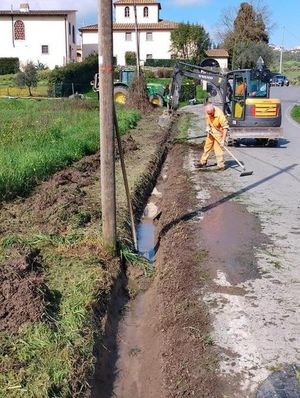Climate change is no longer just a conversation starter among scientists; it's the defining challenge of our time, reshaping landscapes, economies, and societies around the globe. The pressing need for effective strategies has never been clearer, with experts advocating for both climate change mitigation and adaptation.
According to the International Fund for Animal Welfare (IFAW), global atmospheric warming has already reached 1.5 degrees Celsius above pre-industrial levels, with projections indicating it could soar to 3 degrees Celsius by the end of this century. Such changes threaten not just wildlife, but human lives and livelihoods, emphasizing the urgency to build resilience against climate shocks.
At the heart of this dilemma lies the need to distinguish between climate change mitigation and adaptation. While they are often mentioned together, they serve distinctly different purposes. Mitigation involves strategies aimed at slowing down and ideally reversing the impact of climate change, primarily by reducing greenhouse gas emissions. On the other hand, adaptation is about adjusting to the consequences of climate change already underway.
Businesses are increasingly recognizing the importance of these strategies. A recent report by Gartner highlights how companies can tackle this multifaceted issue through innovative technologies. The 2024 Hype Cycle for Environmental Sustainability outlines the phases of technology readiness and maturity, documenting how firms can utilize new tech to tackle climate-related challenges.
Mitigation efforts are largely focused on reducing harmful emissions produced by fossil fuels. According to the Intergovernmental Panel on Climate Change, swift action is necessary to achieve net-zero emissions by 2050. This includes transitioning from fossil fuel-derived energy to renewable resources like solar and wind power, switching from conventional gas-guzzling cars to electric vehicles, and making existing structures more energy-efficient.
One example of effective mitigation is retrofitting older buildings to improve insulation and reduce energy waste significantly. Agriculture can also play its part, for example, by adopting practices such as organic farming, reducing pesticide use, and integrating trees through agroforestry, which helps store carbon and improve biodiversity.
Yet, even with solid mitigation plans, adaptation remains just as important. While efforts are made to curtail future greenhouse gas emissions, we must also confront the realities of changing weather patterns and rising sea levels. Adaptation strategies include building sea walls to protect coastal areas, managing water usage to counteract droughts, and employing prescribed burns to decrease the risk of widespread wildfires.
Sarah Watt, VP Analyst and AI Lead at Gartner, emphasizes the need for businesses to adopt technology thoughtfully. She believes corporations should integrate approaches combining digital, engineering, and nature-based solutions to mitigate climate impacts and prepare for severe weather events. An AI can help firms optimize sustainability initiatives, improve data collection, and streamline operations, but only if these tools are applied judiciously to avoid negative environmental effects.
Despite the numerous hurdles on the road to sustainability, businesses can take proactive steps now rather than wait for next-gen technologies. Navigational strategies can help align short-term goals with long-term environmental commitments, striving for success without locking companies down with unforeseen costs later.
The IFAW notes the dual approach of mitigation and adaptation can be seen across various projects. For example, their wildfire response program not only reacts to ecological disasters but also aims to bolster community resilience against such events, reflecting the integral connection between the two approaches.
Both strategies are not only complementary but necessary for climate justice. Wealthier nations often have the means to invest heavily in mitigation strategies, whereas less developed countries may focus their resources on local adaptation techniques. The disparity reinforces the notion of shared responsibility and collaborative efforts on a global scale.
Another example is wildlife conservation, where efforts are being tied to both mitigation and adaptation practices. Protecting natural habitats, using regenerative farming practices, and advocating for wildlife conservation contribute not only to stimulating biodiversity but also promoting carbon capture, both mitigating and adapting to climate change simultaneously.
Technologies like AI are at the forefront, serving as a bridge between the two strategies. They can refine sustainability efforts by enabling data-driven decision-making, which is particularly important for efficiency and resource management. For example, optimizing farming methods can lead to lower emissions, directly helping both mitigation and adaptation goals.
Forests play a pivotal role as natural carbon sinks, removing carbon dioxide from the atmosphere. This makes initiatives aimed at planting trees and preserving ecosystems increasingly important. Alternatively, advocating for measures to protect oceans is just as necessary. Marine environments also act as carbon sinks and support biodiversity, showcasing the interconnected nature of these efforts.
Both climate change mitigation and adaptation are wide-ranging fields—each requiring diligent exploration and strategic investment. A singular approach would be insufficient to tackle the looming challenges posed by climate change. Therefore, stakeholders, whether they be corporations or governments, must adopt integrated strategies to genuinely forge pathways toward sustainability.
While challenges remain, it's clear the road to mitigating climate change and adapting to its effects is fraught with opportunity. Now is not the time to shy away from the hard work; instead, collective efforts can lead us toward innovative solutions, protecting not just wildlife but human life, ensuring our ecosystems endure.
Emphasizing education and outreach is also key. Local communities play a fundamental role, as their participation can drive sustainable initiatives at grassroots levels. Programs focused on raising awareness about the importance of both mitigation and adaptation strategies can empower individuals to take stewardship of their environment, fostering long-lasting change on multiple fronts.
Technology's role is undeniable as we navigate this era of climate transformation. With tools ranging from data analytics to new energy technologies, businesses and communities can work hand-in-hand to implement viable solutions. Whether through advancing clean energy innovations or refining resource management techniques, the future of our planet hinges on our collective responses to climate challenges.
One thing is clear: the fight against climate change is multifaceted. Instead of choosing between mitigation and adaptation, we should embrace both strategies as necessary and complementary. This dual effort not only broadens our reach but reinforces our resilience against the impacts of climate change.
The clock is ticking, but proactivity, coupled with innovative technology and thoughtful strategies, affords us the possibility to rewrite the future. We’re not just aiming for survival; we’re striving for thrival—a world where both nature and humanity flourish.



